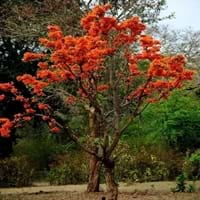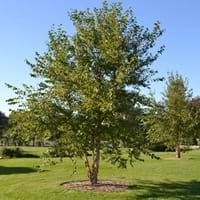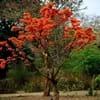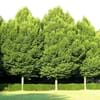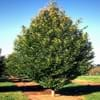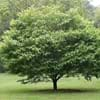Life Span
Perennial
Perennial
Origin
Southern Asia, India
Mid-Atlantic United States, Southeastern United States, Central United States, South-Central United States
Types
Not Available
not available
Habitat
Subtropical climates, Tropical Climate
bottomlands, Depression on prairies, ditches, Floodplains, Riverbanks, stream banks, Swamps
USDA Hardiness Zone
10-13
4-9
Sunset Zone
H1, H2, 23, 24
1a, 1b, 2a, 2b, 3a, 3b, 4, 5, 6, 7, 8, 9, 10, 11, 12, 13, 14, 15, 16, 17, 18, 19, 20, 21, 22, 23, 24
Habit
Upright/Erect
Oval or Rounded
Flower Color
Orange, Black
Yellow, Brown
Flower Color Modifier
Bicolor
Bicolor
Fruit Color
Bronze, Sandy Brown
Black
Leaf Color in Spring
Green
Green, Light Green
Leaf Color in Summer
Dark Green
Green, Light Green
Leaf Color in Fall
Dark Green
Yellow, Light Yellow, Tan
Leaf Color in Winter
Not Available
Not Available
Leaf Shape
Pinnate
Oval with a pointed tip and fine teeth along their edges
Plant Season
Spring, Winter
Spring, Summer, Fall, Winter
Sunlight
Full Sun, Partial Sun
Full Sun, Partial Sun
Type of Soil
Loam, Sand
Clay, Loam, Sand
The pH of Soil
Acidic, Neutral
Acidic, Neutral
Soil Drainage
Well drained
Average
Bloom Time
Early Spring, Late Winter
Spring
Tolerances
Drought
Wet Site, Pollution, Soil Compaction
Where to Plant?
Ground
Ground
How to Plant?
Seedlings
Seedlings
Plant Maintenance
Medium
Low
Watering Requirements
Average Water Needs
Requires a lot of watering, Requires regular watering
In Summer
Lots of watering
Lots of watering
In Spring
Moderate
Moderate
In Winter
Average Water
Average Water
Soil pH
Acidic, Neutral
Acidic, Neutral
Soil Type
Loam, Sand
Clay, Loam, Sand
Soil Drainage Capacity
Well drained
Average
Sun Exposure
Full Sun, Partial Sun
Full Sun, Partial Sun
Pruning
Remove damaged leaves, Remove dead branches, Remove dead leaves
Prune in the late winter or spring, Remove dead or diseased plant parts, Shape and thin as needed
Fertilizers
All-Purpose Liquid Fertilizer
All-Purpose Liquid Fertilizer, No need to fertilize every year
Pests and Diseases
Rats
Aphids, Red blotch, Sawfly Larvae
Plant Tolerance
Drought
Pollution, Soil Compaction, Wet Site
Flower Petal Number
Single
Not Available
Foliage Texture
Medium
Medium
Foliage Sheen
Matte
Matte
Attracts
Birds, Hummingbirds
Not Available
Allergy
Anaemia, Kidney Disease
Asthma
Aesthetic Uses
Not Used For Aesthetic Purpose
Showy Purposes
Beauty Benefits
Not Available
Not Available
Environmental Uses
Air purification
Erosion control, Wildlife
Medicinal Uses
Analgesic, anti-inflammatory, antimicrobial, Astringent, Diuretic
No Medicinal Use
Part of Plant Used
Flowers, Gum, Leaves
Whole plant
Other Uses
Used as a dyeing color for fabric, used for making charcoal, Used to make leather, Used to prepare a traditional Holi colour
used for making roof trusses, poles, joists, piles, Used in construction, Used in Furniture
Used As Indoor Plant
No
No
Used As Outdoor Plant
Yes
Yes
Garden Design
Feature Plant, Shade Trees, Tropical
Feature Plant, Shade Trees
Botanical Name
BUTEA monosperma
BETULA nigra
Common Name
Flame-of-the-forest, Parrot Tree
River Birch
In Hindi
पलाश
River Birch
In German
Flamme -of -the- Wald
Fluss Birch
In French
Flame -of-the -forest
Birch river
In Spanish
Llama - de - la - bosque
river Birch
In Greek
Φλόγα - of-the - δάσος
ποταμός Birch
In Portuguese
Chama -of-the -forest
river Birch
In Polish
Płomień -of -the- las
Rzeka Birch
In Latin
Flamma -of - Silva
Betula
Phylum
Magnoliophyta
Magnoliophyta
Class
Magnoliopsida
Magnoliopsida
Family
Fabaceae
Betulaceae
Clade
Angiosperms, Eudicots, Rosids
Angiosperms, Eudicots, Rosids
Tribe
Phaseoleae
Not Available
Subfamily
Faboideae
Not Available
Number of Species
Not Available
Not Available
Season and Care of Flame-of-the-forest and River Birch
Season and care of Flame-of-the-forest and River Birch is important to know. While considering everything about Flame-of-the-forest and River Birch Care, growing season is an essential factor. Flame-of-the-forest season is Spring and Winter and River Birch season is Spring and Winter. The type of soil for Flame-of-the-forest is Loam, Sand and for River Birch is Clay, Loam, Sand while the PH of soil for Flame-of-the-forest is Acidic, Neutral and for River Birch is Acidic, Neutral.
Flame-of-the-forest and River Birch Physical Information
Flame-of-the-forest and River Birch physical information is very important for comparison. Flame-of-the-forest height is 910.00 cm and width 1,070.00 cm whereas River Birch height is 1,220.00 cm and width 1,220.00 cm. The color specification of Flame-of-the-forest and River Birch are as follows:
Flame-of-the-forest flower color: Orange and Black
Flame-of-the-forest leaf color: Green
River Birch flower color: Yellow and Brown
- River Birch leaf color: Green and Light Green
Care of Flame-of-the-forest and River Birch
Care of Flame-of-the-forest and River Birch include pruning, fertilizers, watering etc. Flame-of-the-forest pruning is done Remove damaged leaves, Remove dead branches and Remove dead leaves and River Birch pruning is done Prune in the late winter or spring, Remove dead or diseased plant parts and Shape and thin as needed. In summer Flame-of-the-forest needs Lots of watering and in winter, it needs Average Water. Whereas, in summer River Birch needs Lots of watering and in winter, it needs Average Water.
